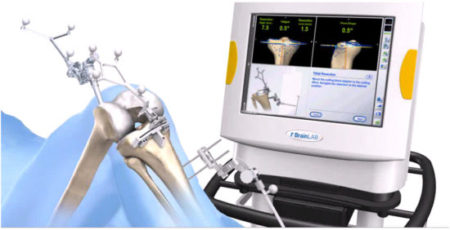Mr. Oberoi, a 60 year old gentleman, had been told he required a knee replacement surgery. He had nearly finalised a date with his surgeon when he was told about an option for having customized knee replacements – or patient specific knees – made for him.
“I wasn’t sure what to expect at first” Mr. Oberoi told us. “I had spent so much time understanding what happens in a normal knee replacement surgery, so it was difficult to grasp all the new information. And the customized knees were also more expensive.”
As the name suggests, patient specific knees are implants that are made specifically for a particular patient. Doctors like Dr. Abhishek Kumar Mishra who specialize in advanced knee replacement procedures speak highly in favour of patient specific implants (PSI’s).
“The difference with a PSI is that the Doctor has a fair idea of what size of implant will be used before the surgery” he says. “The accuracy and the precision of the fit is much better when it’s customized.” A PSI also leads to less intervention and a more objective surgery with lesser room for error, where the chances of infection and blood loss are also reduced. It’s somewhat like getting a tailor to custom make a suit vs buying a ready made garment.
The higher cost of these implants remains a concern for most people getting knee replacements. “I really was concerned about paying more” Mr. Oberoi asserted. “But Dr. Mishra explained the benefits to me quite clearly. I was told that I’d be able to recover and walk quite soon.” Mr. Oberoi did go ahead with the PSI once he was convinced of his comfort and the reduced time for his surgery.
Computer Aided Navigation for Knee Replacement
Patients who need a knee replacement surgery can also have them done by a computer navigated procedure. “With computer aided navigation, almost the same procedure is done” explains Dr. Mishra. “The difference here is that the alignment of the knee is confirmed in the OT itself. And using a computer helps us stay more precise and on track.”
With the computer aided navigation for knee replacement, a patient has to suffer less pain after surgery and there are fewer chances of complications developing because of blood clots (embolism). “Most times, patients don’t even required a blood transfusion and the scar is so small and there are considerably fewer stitches afterwards.”
Conclusion
While patients are offered these advanced procedures as optional treatments, the benefits here far outweigh the risks or the costs involved. “I had my life and my movement back much sooner than I thought I would” says Mr. Oberoi. “And there was hardly any pain after my surgery. That alone was worth all the effort and money.”

